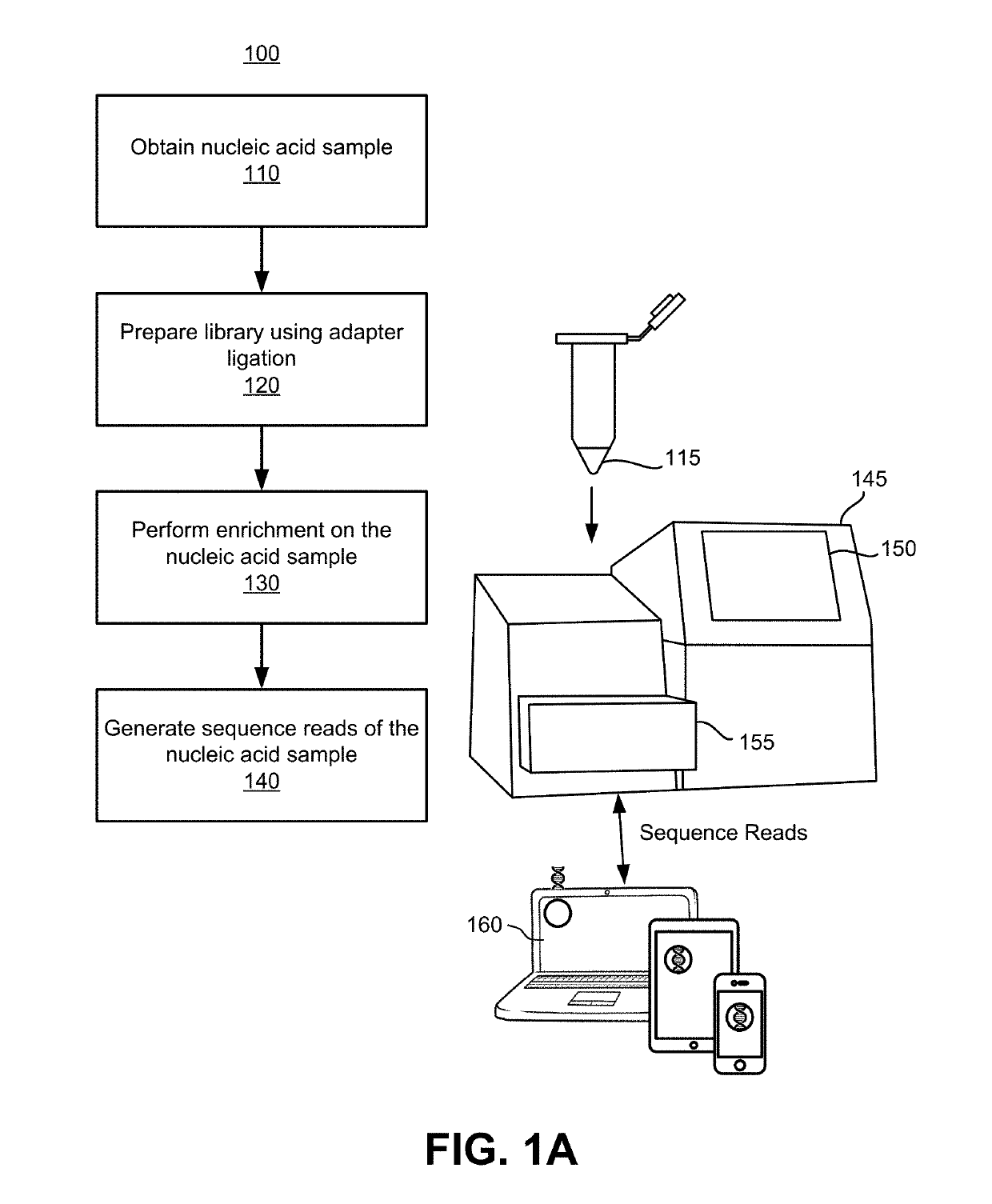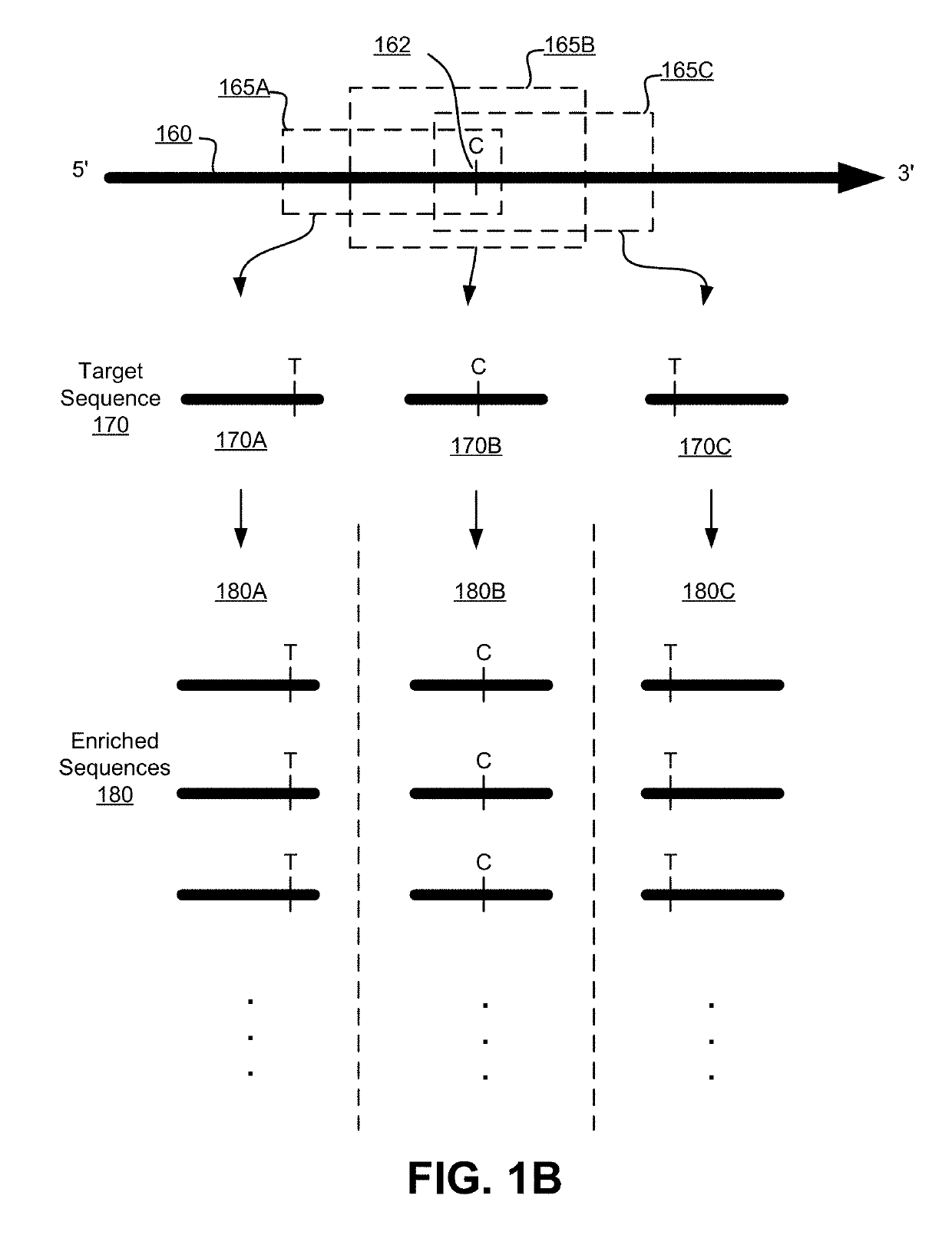Models for Targeted Sequencing
a sequencing model and sequencing technology, applied in the field of models for targeted sequencing, can solve the problems of difficult detection of dna from tumor cells from blood samples, unreliable results for variant calling or other types of analysis, and difficulty in achieving the necessary sequencing depth of tumor-derived fragments
- Summary
- Abstract
- Description
- Claims
- Application Information
AI Technical Summary
Benefits of technology
Problems solved by technology
Method used
Image
Examples
example noise
IV. Example Noise Models
[0193]FIG. 4 is a diagram of an application of a Bayesian hierarchical model 225 according to one embodiment. Mutation A and Mutation B are shown as examples for purposes of explanation. In the embodiment of FIG. 4, Mutations A and B are represented as SNVs, though in other embodiments, the following description is also applicable to indels or other types of mutations. Mutation A is a C>T mutation at position 4 of a first reference allele from a first sample. The first sample has a first AD of 10 and a first total depth of 1000. Mutation B is a T>G mutation at position 3 of a second reference allele from a second sample. The second sample has a second AD of 1 and a second total depth of 1200. Based merely on AD (or AF), Mutation A may appear to be a true positive, while Mutation B may appear to be a false positive because the AD (or AF) of the former is greater than that of the latter. However, Mutations A and B may have different relative levels of noise rat...
example joint
VI. Example Joint Model
[0217]FIG. 10 is flowchart of a method 1000 for using a joint model 225 to process cell free nucleic acid (e.g., cfDNA) samples and genomic nucleic acid (e.g., gDNA) samples according to one embodiment. The joint model 225 may be independent of positions of nucleic acids of cfDNA and gDNA. The method 1000 may be performed in conjunction with the methods 800 and / or 900 shown in FIGS. 8-9. For example, the methods 800 and 900 are performed to determine noise of nucleotide mutations with respect to cfDNA and gDNA samples of training data from health samples. FIG. 11 is a diagram of an application of a joint model according to one embodiment. Steps of the method 1000 are described below with reference to FIG. 11.
[0218]In step 1010, the sequence processor 205 determines depths and ADs for the various positions of nucleic acids from the sequence reads obtained from a cfDNA sample of a subject. The cfDNA sample may be collected from a sample of blood plasma from the ...
PUM
| Property | Measurement | Unit |
|---|---|---|
| Dispersion potential | aaaaa | aaaaa |
| Depth | aaaaa | aaaaa |
| Frequency | aaaaa | aaaaa |
Abstract
Description
Claims
Application Information
 Login to View More
Login to View More - R&D
- Intellectual Property
- Life Sciences
- Materials
- Tech Scout
- Unparalleled Data Quality
- Higher Quality Content
- 60% Fewer Hallucinations
Browse by: Latest US Patents, China's latest patents, Technical Efficacy Thesaurus, Application Domain, Technology Topic, Popular Technical Reports.
© 2025 PatSnap. All rights reserved.Legal|Privacy policy|Modern Slavery Act Transparency Statement|Sitemap|About US| Contact US: help@patsnap.com



